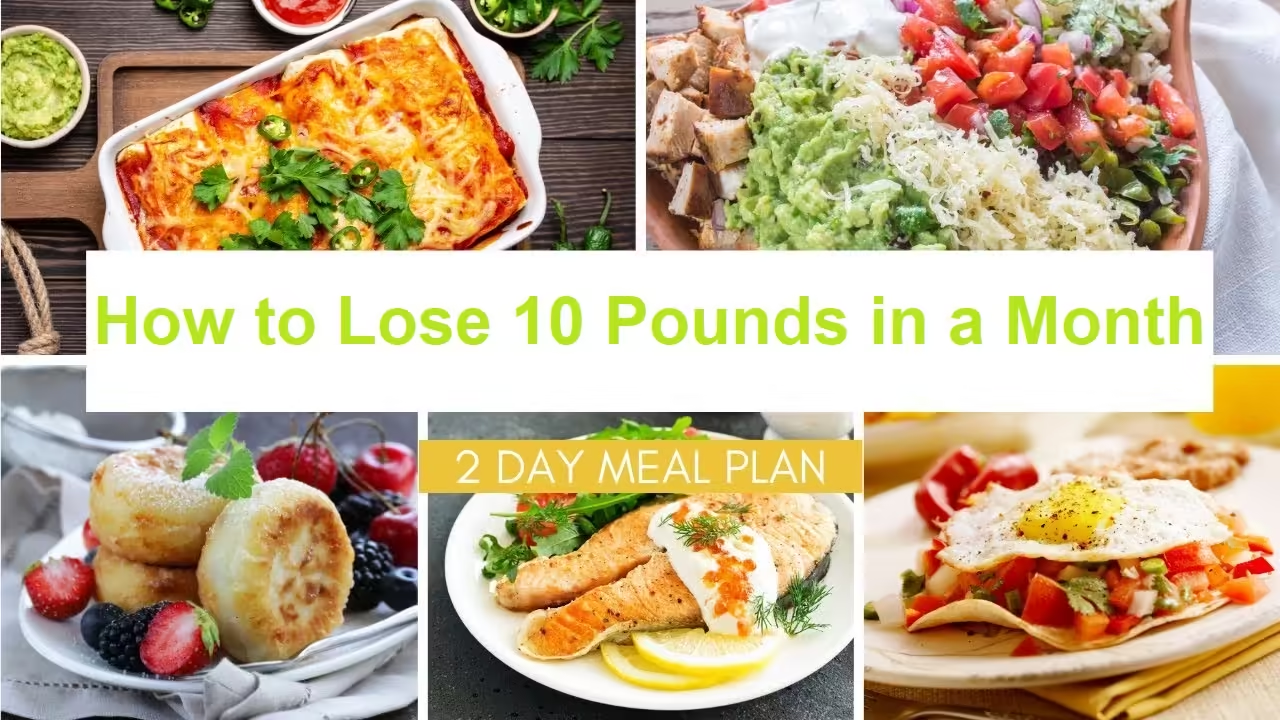As for losing 10 pounds in a month, the answer to your question is that you need a good diet plan which is appropriate for your situation, your history, and your aspirations. Addressing such other complexities as the unusual variety of eating styles and body types, individual dietary prescriptions appear to be more effective than general dieters. Let’s then advance to those measures that will make and do work toward your diet and me and achieve tangible results.
Step 1: Set Clear and Realistic Goals
Do you wish to get it out right away first – what is the end goal? Take losing 10 pounds within a period of a month for example – this isn’t as hard if you break it down into weekly targets, right now that’s much more fun!
How to Do It: Make sure to set a target of losing 3-4 pounds in a week as part of your weekly targets. When a person pursues more of these smaller tasks, the chances of completing them successfully become lower.
Step 2: Monitor and Analyze your Eating Patterns
There exist geographers out there like you looking to determine the internal mechanisms and driving forces behind the human existence. Sometimes it is ideal to effect changes in instalments, therefore, take a week and do nothing in an effort to stalk yourself and figure how you do things at the time.
How to do it: What is suggested here would be to try keeping tabs on your meal times, portions, types of food and drink as well as the emotion behind the consumption or in some cases the absence thereof. There’s need to know what you want to change and what patterns are constitutive of your diet.
Step 3: Identify what you would love to eat in addition to all your magazines food promoters.
This to me is the distinguishing factor in the construction of a unique plan: every individual who takes a step forward with their goals do so very differently differing from having a ‘cookie-cutter’ plan. If possible, do not restrict yourself because there are many foods you love very much but can’t have or you want off the menu. This way you can adhere to the plan for long because it is designed for you.
How to Do It: Construct a Brief Statement Answering the Following Questions: A steamer cup of vegetables is one of your favorite meals, a cheeseburger is the last food you’d like to see, and your dog does not allow you to emulate Steve Jobs’ dietary habits. This way, you achieve a solid balance between healthy eating and pleasure.
Step 4: Find Balance The Middle Path
What is no realistic plan without this key quality? And it’s affordable indeed. Aim for every meal to include a blend of the three macros, in moderate amounts so that one is full and content.
How to Do It: The ideal ratio in such cases must be set in the region of 45-65% carbs, 10-35% protein and the remaining 20-35% compositional fats. A combination of whole grains, lean protein and nutritional fats such as olive oil or avocado can be essential in maintaining the satiety and energy levels of the user.
Step 5: Establish a Meal Pattern Or A Schedule For Meals
The strategy of meal planning also removes the need for ruthlessly hunting for the points of weakness. This will also tackle one more category of weak points which is the frustration of what do I eat today.
How to Do It: Concentrate on the objectives of today and take the entire weekend to devise a strategy of what you will eat for the week, considering snacks in the middle of meals as well. You can also save a lot of time during the week by making some components or some portions of food in advance.
Step 6: Watch for Portions
The portion of food consumed is equally important as the food itself. There is a possibility of losing weight quickly with low-calorie diet or food, but what is reckless to consider is having too many nutrients over normal consumption.
How to Do It: You can use measuring cups, a food scale, or simply visible standards, as in the hand, to establish the appropriate portion sizes you need to consume in order to accomplish your targets. A good technique in this case is to place the veggies in half of the plate, muscle meat or lean protein on the quarter of the plate and whole grains constitute the last quarter of the plate.
Step 7: Rendering the Body Water-Replete
Most people just think about water as a part of their ‘hidden assets’. This is the reason why it’s significance sometimes does not receive the level of appreciation it should have. Further, when aiming to reduce weight, the urge to overeat can be excessive and energy must be preserved wherever possible. Often, the feeling of hunger is mistaken for thirst as well.
How to Do It: An average of eight 8-ounce glasses would need to be taken daily. Any of the herbal teas or fruit-waters could be selected, given they are good and low calorie.
Step 8: Exercise Regularly
One cannot isolate diet and physical activity in this instance, diet has a role to play. Here, physical activity helps burn off extra calories that were ingested. In addition, it also boosts up the energetic capabilities and improves mood!
How to Do It: Look for endeavors that you consider enjoyable – walking, biking, dancing etc. The recommended level should be at least 150 minutes of moderate intensity activity for a week, distributed over the week. It is worthwhile noting that short bouts of exercises lasting for a few seconds will add up with time.
Step 9: Monitor and Readjust as Necessary
Finally, after getting to the end of the program, reflect on your achievements. In case of issues, relax, and make a few changes. An adherence to a plan is assured by the very diversity within it.
How to Do It: Record your achievements in a notebook or an application and take into account the volume of portions eaten, types of meals consumed, or the degree of activities undertaken. One can attempt to bring about slow changes as well to see if it helps with any issues that they might be facing.
Step 10: Assist Ourselves More in the Cases
We Feel Like We Have to Assist Ourselves Receiving assistance is optional and some people may not feel the need to, but if you get that sensation that you are pretty much stuck, or that you would like to get assistance, then registered dietitian or nutritionist can assist you. The healthcare providers and nutritional professionals possess the needed expertise in developing customized plans for their clients.
How to Do It: First, just in case you haven’t already done so, schedule an appointment with the nutrition specialist so that you can voice your goals along with other important issues like your health and personal preferences. There is no point in making excuses because encouragement, guidance, and ideas will all be present to facilitate the achievement of the target.
Conclusion
Finally, personalization of the approach is an absolute imperative in the process of attaining weight loss targets. By Wee Martin, practices outlined above, you are well on the road to effectively losing 10 pounds in a month, in such a way that is healthy for your body and your lifestyle as well. Last but not least, remember that it is not only the end result that is important but the journey is equally as important as the two.
Ready to start now? The first step in outlining your objectives is examining your habits.
Based on your average day, putting into action the plan to lose 10 pounds in a month would therefore be simpler and more enjoyable. Come on, then, let’s not waste any time and instead inspire ourselves to adopt a healthier and more appealing lifestyle.




